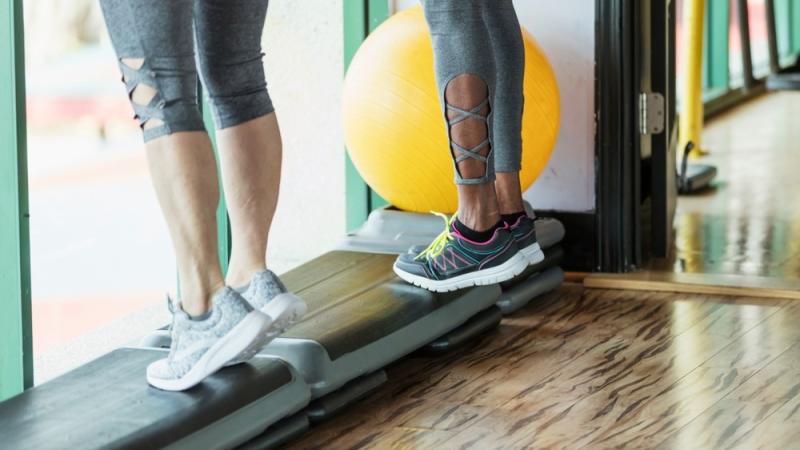Safeguarding Bone Health and Preventing Injuries

Maintaining optimal bone health in aging is paramount to ensure a high quality of life and reduce the risk of fractures and bone-related conditions. In this comprehensive guide, we will explore effective strategies, including exercises for strong bones, balance-enhancing exercises, the benefits of yoga for seniors, essential fall prevention tips, and the importance of fall detection devices in promoting bone health and overall well-being in old age.

Understanding Bone Health
Understanding the nuances of bone health in aging is essential for proactive bone care. Aging leads to changes in bone density and strength, making it crucial to prioritize bone health through a holistic approach that includes nutrition, exercise, and lifestyle modifications.
For example, calcium and vitamin D are vital nutrients for bone health. Ensuring an adequate intake of these nutrients through foods like dairy products, leafy greens, and fortified cereals can support bone strength and density. Regular weight-bearing exercises, such as walking or jogging, help maintain bone mass and reduce the risk of osteoporosis.
Factors Affecting Bone Health
Various factors can impact bone health in aging, including genetics, dietary habits, physical activity levels, and underlying medical conditions. Individuals with a family history of osteoporosis may have a higher risk of developing the condition and should take proactive steps to preserve bone density.
For instance, smoking and excessive alcohol consumption can weaken bones and increase the risk of fractures. By avoiding these habits and focusing on a balanced diet rich in nutrients essential for bone health, individuals can support their bones as they age.
Nutrition for Strong Bones
Nutrition plays a critical role in maintaining strong bones. Adequate intake of calcium, vitamin D, magnesium, and other essential nutrients is key to supporting bone health in aging. Incorporating foods rich in these nutrients, such as dairy products, fortified cereals, nuts, seeds, and leafy greens, can help maintain bone density and strength.
For example, a diet rich in fruits and vegetables provides antioxidants that help reduce inflammation and support bone health. Consuming foods high in omega-3 fatty acids, like salmon and walnuts, can also promote bone strength and reduce the risk of fractures.
Regular Physical Activity
Engaging in exercises for strong bones is crucial for maintaining bone strength and overall health. Weight-bearing exercises, Knee-Strengthening Exercises, resistance training, and activities that improve balance and coordination can all contribute to better bone health and reduce the risk of fractures.
For instance, weight-bearing exercises like brisk walking, dancing, or stair climbing help stimulate bone growth and maintain bone density. Resistance training with weights or resistance bands strengthens muscles and improves bone health.
Importance of Balance and Yoga
Incorporating exercises that focus on balance, such as yoga, can enhance stability, flexibility, and muscle strength, contributing to better overall bone health in aging. Yoga for seniors is particularly beneficial, as it promotes relaxation, reduces stress, and improves posture.
For example, yoga poses like Tree Pose, Warrior Pose, and Chair Pose help improve balance, strengthen muscles, and support bone health. The gentle nature of yoga makes it suitable for individuals of all fitness levels and can be adapted to accommodate varying degrees of flexibility and mobility.
Fall Prevention Tips and Devices
Preventing falls is crucial for maintaining bone health and preventing injuries, especially in older adults. Implementing fall prevention tips can significantly reduce the risk of falls and promote safety in everyday activities. Additionally, using fall detection devices provides an added layer of security and peace of mind for seniors and their caregivers.
For instance, simple modifications in the home environment, such as removing tripping hazards, installing grab bars in bathrooms, and ensuring proper lighting, can help prevent falls. Fall detection devices, like wearable alert systems or smart home sensors, can automatically detect falls and alert caregivers or emergency services in case of an accident.
Conclusion
In conclusion, prioritizing bone health in aging through a combination of proper nutrition, regular exercise, balance-focused activities like yoga, and fall prevention measures is crucial for maintaining strong and resilient bones as we age. By adopting a holistic approach to bone health and taking proactive steps to prevent falls, individuals can enjoy a higher quality of life, independence, and mobility in their senior years.
Remember, taking care of your bones today can help you lead a healthier, more active life tomorrow. Consult with healthcare professionals for personalized advice on maintaining bone health and preventing falls to support your overall well-being as you age.
Post Your Ad Here

Comments